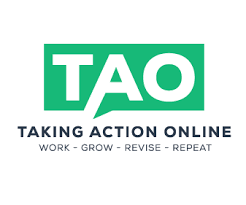
Unlocking the Secrets to Financial Freedom for Entrepreneurs
Financial freedom isn’t just a dream; it’s a tangible goal that every entrepreneur can reach with the right strategies. Imagine a life where money is no longer a source of stress but a tool for achieving your dreams. This is what financial freedom looks like, and it’s within your grasp.
Grasping the Essentials of Financial Independence
Financial independence is the point where your assets generate enough income to cover your expenses. You’re not working for money; money is working for you. Here’s how to start:
- Calculate your current financial standing – know your income, expenses, assets, and liabilities.
- Understand the power of passive income – income that doesn’t require your active involvement.
- Learn to make your money grow – through investments, business expansion, or other ventures.
- Focus on financial education – knowledge is power, and in finance, it’s profit too.
- Embrace frugality – not as a limitation, but as a strategic choice for long-term gain.
Identifying Common Financial Pitfalls for Entrepreneurs
Even the most promising ventures can stumble over financial hurdles. Here are some traps to avoid:
- Over-investing in non-essential business expenses – stay lean and focused on growth.
- Ignoring personal savings – your business shouldn’t be your only financial plan.
- Failing to plan for taxes – they can take a big bite out of your profits if you’re not careful.
- Letting debt get out of control – use debt strategically, not as a crutch.
- Underestimating the importance of cash flow – it’s the lifeblood of your business.
Crafting a Bulletproof Financial Plan
A solid financial plan is your roadmap to success. It guides your decisions and keeps you on track towards your goals. Start by assessing where you are, where you want to be, and how you’ll get there.
Setting Realistic Financial Goals
Goals give you direction and motivation. Be specific about what financial freedom means to you. Maybe it’s having a certain amount in the bank, or perhaps it’s generating a specific passive income each month. Whatever it is, write it down, make it measurable, and set a deadline.
Building Multiple Streams of Income
Relying on a single income is risky. Diversify your income streams to protect and grow your wealth. Consider options like:
- Starting a side business that complements your main venture.
- Investing in real estate for rental income.
- Creating digital products that can be sold repeatedly.
- Investing in stocks or mutual funds for dividends and growth.
- Offering consulting or coaching services in your area of expertise.
Strategies for Effective Budgeting and Expense Management
Controlling your expenses is just as important as increasing your income. Create a budget that aligns with your financial goals and stick to it. Track every dollar, cut unnecessary costs, and always look for ways to optimize your spending. Remember, every dollar saved is a dollar that can be invested in your future.
Leveraging Business Growth for Personal Gain
As your business flourishes, it’s not just about reinvesting every penny back into the company. It’s also about using that growth to secure your personal financial future. Think of your business as a vehicle that can drive you towards personal wealth and security.
Reinvesting Profits Wisely
Reinvesting profits is essential, but it’s crucial to do it wisely. Allocate a portion of profits to strengthen your business, but also set aside funds for personal investments that can yield passive income. This could mean buying stocks, acquiring real estate, or even investing in other businesses.
Mastering the Art of Scaling
Scaling your business is about more than just increasing sales; it’s about increasing efficiency and maximizing profit margins. This means investing in the right technology, hiring the right people, and streamlining processes. When done correctly, scaling can exponentially increase your personal wealth. Read more here
Investment Strategies for Long-Term Wealth
Investing is a marathon, not a sprint. Your goal should be to build a diverse portfolio that can weather market fluctuations and grow over time. This is how you turn today’s success into tomorrow’s legacy.
Understanding Investment Basics
Before diving into investing, get a handle on the basics. Learn about risk tolerance, the power of compounding, and the importance of starting early. Investments can be a powerful tool for wealth creation, but they require a solid foundation of knowledge to be effective.
Diversifying Your Portfolio
Diversification is your safety net. It’s the process of spreading your investments across various asset classes to reduce risk. This might include a mix of stocks, bonds, real estate, and even alternative investments like precious metals or cryptocurrencies.
Learning When to Invest in Stock Market vs. Real Estate
Both the stock market and real estate have their own advantages. Stocks offer liquidity and ease of diversification, while real estate can provide tangible assets and potential rental income. Your choice should be based on your financial goals, risk tolerance, and investment timeline.
Automation and Delegation: Working Smarter, Not Harder
The key to scaling your business without scaling your workload is to automate and delegate. This frees up your time, allowing you to focus on growth and strategy. It’s about making your business work for you, not the other way around.
Tools and Services for Business Automation
There’s a tool for almost every task that can automate parts of your business. From customer relationship management (CRM) systems that handle client interactions, to accounting software that manages your finances, automation can take the repetitive tasks off your plate. Explore options like:
- Email marketing software for personalized communication at scale.
- Project management tools to keep your team on track without constant oversight.
- Inventory management systems that alert you when it’s time to restock.
- Social media schedulers to maintain a consistent online presence.
- Automated billing and invoicing to ensure timely payments.
Delegating Tasks to Optimize Your Time and Resources
Delegation is not about shedding responsibility; it’s about entrusting tasks to capable hands. Identify the tasks that only you can do and delegate the rest. Hire skilled individuals or outsource to reputable companies. This allows you to leverage other people’s time and expertise to grow your business.
Roadmap to Financial Prosperity
Achieving financial freedom is a journey that requires a clear roadmap. This roadmap should include plans for your retirement, the future of your business, and safeguards against the unexpected.
Building a Retirement Plan Early
Start planning for retirement now, not later. Take advantage of retirement accounts that offer tax benefits, like a Solo 401(k) or SEP IRA. Invest consistently, and consider hiring a financial advisor to help you navigate your options and maximize your savings.
Creating a Succession Plan for Your Business
Your business should continue to thrive, with or without you. A succession plan outlines how your business will be managed and by whom in your absence. It ensures that your business maintains its value and supports your financial goals long-term.
The Significance of Personal and Business Insurance
Insurance is your safety net. Personal insurance protects your family’s lifestyle, while business insurance safeguards the company you’ve worked so hard to build. Assess your needs and get coverage for liabilities, property, health, and life. It’s not just about protecting your assets; it’s about ensuring the continuity of your financial plan.
Keeping a Steady Hand: Managing Risks and Uncertainties
Entrepreneurship is a thrilling ride, full of ups and downs. But with the right approach, you can navigate through the uncertainties and keep your business on a steady growth trajectory. It’s about being proactive, not reactive, when it comes to risk management.
Assessing Financial Risks in Business
Every business faces financial risks, but not all risks are created equal. Start by identifying the risks specific to your industry and business model. This could range from market volatility to credit risks or operational hiccups. Once you’ve pinpointed these risks, evaluate their potential impact on your business and create a plan to address them.
Mitigating Risks Through Smart Decision-Making
Mitigating risks doesn’t mean avoiding them altogether; it means making informed decisions that minimize their potential negative impact. Diversify your product offerings, maintain a solid cash reserve, and ensure your business isn’t overly reliant on any single client or supplier. Smart decision-making also involves regularly reviewing and adjusting your strategies to adapt to changing circumstances.
Key Takeaways
- Financial freedom is a realistic goal for entrepreneurs who are willing to learn and apply sound financial strategies.
- Understanding and managing your expenses are as crucial as generating income.
- Building multiple streams of income can provide stability and accelerate your journey to financial independence.
- Investing in your business’s growth should be balanced with personal wealth-building strategies.
- Risk management is essential for sustaining your business and protecting your financial future.
FAQs: Navigating the Path to Entrepreneurial Financial Freedom
What Are the First Steps I Should Take to Achieve Financial Freedom as an Entrepreneur?
The journey to financial freedom starts with a clear understanding of your current financial situation. Create a detailed budget, track your income and expenses, and set specific, achievable financial goals. Educate yourself on the basics of personal finance and investing, and start building an emergency fund to cushion against unexpected expenses.
How Can I Create Multiple Streams of Income When My Business Demands So Much Time?
Time is a finite resource, so it’s important to use it wisely. Start by automating and delegating tasks within your business to free up your time. Then, look for passive income opportunities that require minimal ongoing effort, such as dividend-paying stocks, rental properties, or creating digital products. Remember, the goal is to work smarter, not harder.
What Are Some Signs That I’m Ready to Scale My Business?
Scaling your business is a major step, and timing is everything. Look for these indicators that you’re ready:
- Consistent profitability over time, indicating a solid market demand for your product or service.
- Systems and processes are in place that allow for increased workload without sacrificing quality.
- A strong, reliable team that can handle additional responsibilities or an increased customer base.
- Customer feedback suggests a demand for more products, services, or features.
- Financial resources are available to invest in growth without jeopardizing operational stability.
How Important Is Investing Outside of My Business?
Diversification is key in building a resilient financial future. Investing outside of your business is crucial because it:
- Spreads your risk across different assets, safeguarding your wealth against business-specific downturns.
- Creates additional income streams that can support you if your business faces a rough patch.
- Allows you to benefit from opportunities in different sectors or markets that your business may not be involved in.
- Provides a sense of financial security and peace of mind, knowing you’re not putting all your eggs in one basket.
What Is the Best Way to Approach Retirement Planning as a Self-Employed Individual?
Retirement planning for the self-employed revolves around foresight and discipline. Here’s how to approach it:
- Start early to take advantage of compounding interest over time.
- Explore retirement savings options tailored for the self-employed, such as a SEP IRA or Solo 401(k).
- Set up automatic contributions to your retirement accounts to ensure consistent savings.
- Consider working with a financial advisor to create a personalized retirement strategy that aligns with your business goals and personal needs.
In conclusion, achieving financial freedom as an entrepreneur is a multifaceted endeavor that goes beyond just running a successful business. It involves a deep understanding of personal finance, strategic planning, and the discipline to follow through with your plans. By setting realistic financial goals, diversifying your income streams, and managing your expenses, you can create a strong financial foundation. Investing in your business growth while also securing your personal finances through external investments and retirement planning will ensure that you are building a sustainable future. Remember, financial freedom is not just about having wealth; it’s about having the choice and the ability to live life on your terms.
So, take the steps today to avoid common financial pitfalls, craft a bulletproof financial plan, and leverage your business growth for personal gain. Stay informed, stay disciplined, and keep your eyes on the prize – financial freedom is closer than you think.
FAQs: Navigating the Path to Entrepreneurial Financial Freedom
As we wrap up this guide to financial freedom for entrepreneurs, let’s address some frequently asked questions that might be on your mind.
What Are the First Steps I Should Take to Achieve Financial Freedom as an Entrepreneur?
Begin by assessing your financial situation, setting clear goals, and educating yourself on financial management. Create a budget, build an emergency fund, and start exploring various income streams. Prioritize your financial education and seek advice from professionals when necessary.
How Can I Create Multiple Streams of Income When My Business Demands So Much Time?
Look for passive income opportunities that align with your business or personal interests. Automate and delegate tasks within your business to free up time for other ventures. Investments, side businesses, and digital products are great options to consider.
What Are Some Signs That I’m Ready to Scale My Business?
Indicators include consistent profitability, streamlined processes, a strong team, customer demand for growth, and the financial capability to invest in expansion without compromising current operations.
How Important Is Investing Outside of My Business?
It’s vital for risk management and financial stability. Diversifying your investments can protect your wealth from business-specific risks and provide additional income sources.
By addressing these questions and following the strategies outlined in this article, you’re well on your way to achieving the financial freedom that every entrepreneur deserves. Remember, the journey is unique for everyone, but the destination of financial independence is a shared goal. Stay focused, stay driven, and let your entrepreneurial spirit guide you to a future where you are the master of your financial destiny. Use Taking Action Online to guide you every Steps on your way.




